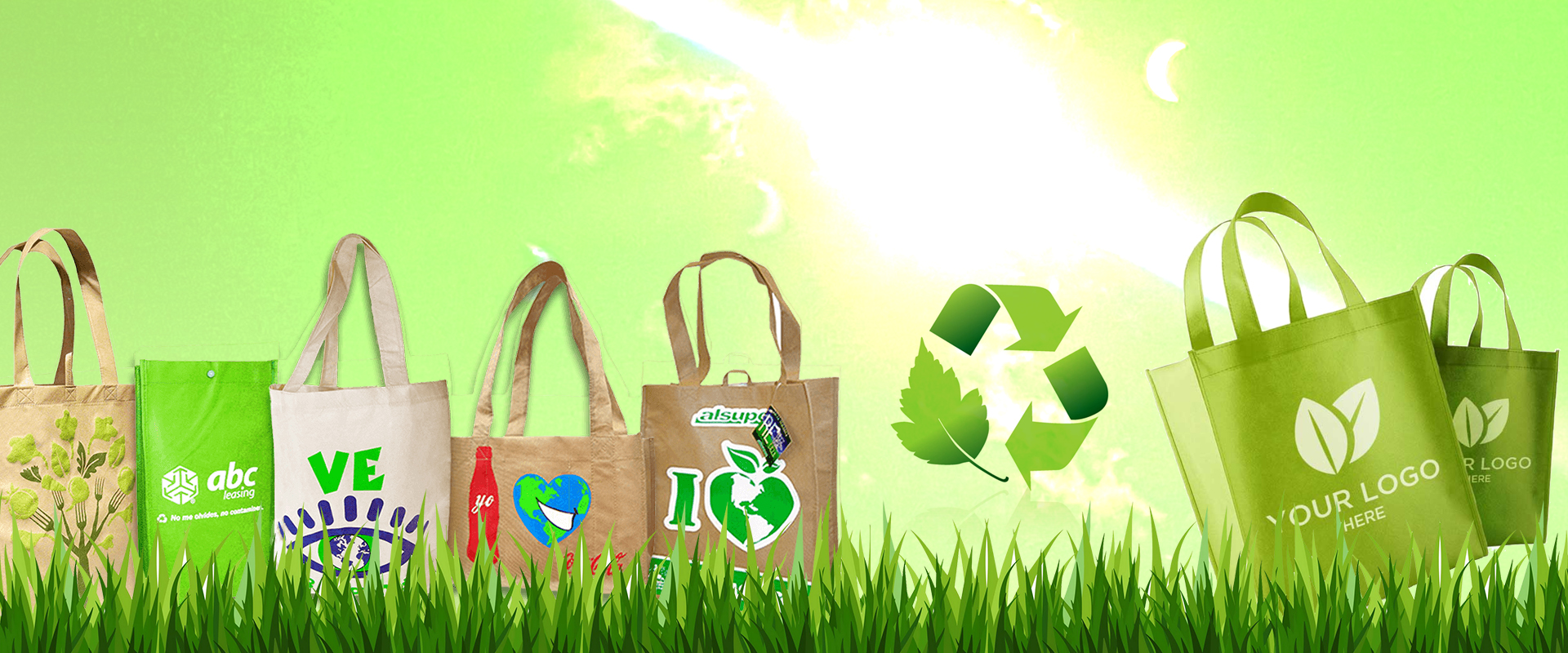Degradable Polythene Bags: Solution for the Environment
Plastic bags have long been a staple in households and industries due to their convenience and affordability. However, their durability poses a severe threat to the environment, as they can persist in landfills and oceans for hundreds of years. Degradable polythene bags, on the other hand, are designed to break down over time, reducing their environmental impact.
Understanding the Environmental Impact of Traditional Plastic Bags
Degradable polythene bags offer a sustainable alternative to traditional plastic bags, which are made from non-renewable resources such as petroleum. Traditional plastic bags pose significant environmental hazards as they contribute to litter, clog waterways, harm marine life, and release toxic chemicals into the environment during decomposition. The persistence of plastic pollution underscores the urgent need for sustainable alternatives like degradable polythene bags.
What Are Degradable Polythene Bags?
Degradable polythene bags are designed to degrade or break down when exposed to environmental conditions such as sunlight, heat, or moisture. Unlike traditional plastic bags, which undergo photodegradation into smaller plastic particles, degradable polythene bags undergo various degradation processes, ultimately leading to their breakdown into harmless substances.
Types of Degradable Polythene Bags
There are two main types of degradable polythene bags: biodegradable and oxo-biodegradable bags. Biodegradable bags are composed of organic materials such as plant-based polymers or starch, which can be broken down by microorganisms into natural compounds like water, carbon dioxide, and biomass. Oxo-biodegradable bags, on the other hand, contain additives that accelerate degradation through oxidation, leading to fragmentation into smaller pieces.
How Do Degradable Polythene Bag Work?
The degradation process of degradable polythene bag depends on factors such as environmental conditions, material composition, and additives. Biodegradable bags undergo microbial degradation, where microorganisms such as bacteria and fungi break down the polymer chains into simpler compounds. Oxo-biodegradable bags, on the other hand, undergo oxidative degradation initiated by exposure to oxygen and UV radiation, leading to fragmentation into smaller fragments.
Biodegradable vs. Oxo-biodegradable Polythene Bag
While both types of degradable polythene bag offer environmental benefits compared to traditional plastic bags, they differ in their degradation mechanisms and end products. Biodegradable bags result in the formation of natural compounds that integrate into the environment, while oxo-biodegradable bags may leave behind microplastics, raising concerns about their long-term environmental impact.
Advantages of Using Degradable Polythene Bags
Environmental Benefits
Degradable polythene bags offer several environmental advantages, including:
- Reduction of plastic pollution
- Conservation of natural resources
- Mitigation of greenhouse gas emissions
Economic Benefits
In addition to their environmental benefits, degradable polythene bags offer economic advantages such as:
- Cost-effectiveness in waste management
- Potential for new revenue streams through sustainable packaging solutions
Challenges and Limitations
Despite their potential, degradable polythene bag face challenges and limitations, including:
- Controversies surrounding the effectiveness of oxo-biodegradable bags
- Lack of standardized regulations and certification for degradable products
Regulation and Certification
To ensure the effectiveness and environmental integrity of degradable polythene bag, regulatory bodies and certification agencies have established standards and guidelines. These include criteria for biodegradability, compostability, and eco-labeling to help consumers make informed choices.
If you want to know more information about cake box cake box visit TopUSAPackaging
The Future of Degradable Polythene Bag
As awareness of plastic pollution grows and regulatory frameworks evolve, the demand for sustainable packaging solutions is expected to increase. Innovations in material science and recycling technologies will play a crucial role in shaping the future of degradable polythene bags, offering a sustainable alternative to traditional plastic packaging.
Conclusion
Degradable polythene bag represent a promising solution to address the environmental challenges posed by traditional plastic bags. By harnessing the principles of biodegradation and oxidative degradation, these bags offer a sustainable alternative that reduces plastic pollution, conserves natural resources, and promotes a circular economy. However, ongoing research, regulation, and consumer education are essential to maximize their environmental benefits and minimize potential drawbacks.
Read also: CBD Display Boxes: Enhancing Brand Visibility and Product Appeal
FAQs (Frequently Asked Questions)
- Are degradable polythene bag compostable?
- While some degradable polythene bag are compostable, it depends on their composition and certification. Biodegradable bags made from organic materials are more likely to be compostable.
- Do degradable polythene bag break down in landfills?
- Degradable polythene bag may break down slowly in anaerobic conditions found in landfills, but the process is significantly slower compared to composting or biodegradation in aerobic environments.
- Are oxo-biodegradable bag environmentally friendly?
- There is ongoing debate about the environmental impact of oxo-biodegradable bag, particularly regarding the generation of microplastics. While they accelerate degradation, their long-term effects on ecosystems are still being studied.
- Can degradable polythene bag be recycled?
- Recycling degradable polythene bag can be challenging due to their mixed composition and additives. However, advancements in recycling technologies may enable greater compatibility with existing recycling systems in the future.
- Are degradable polythene bag cost-effective for businesses?
- The cost-effectiveness of degradable polythene bag depends on various factors, including production costs, waste management expenses, and regulatory compliance. While they may initially be more expensive than traditional plastic bags, long-term benefits in terms of environmental stewardship and brand reputation can outweigh the costs.
This post has 6 comments
Leave a Reply Cancel reply
Recent Comments
Archives
- May 2024
- April 2024
- March 2024
- February 2024
- January 2024
- December 2023
- November 2023
- October 2023
- September 2023
- August 2023
- June 2023
- May 2023
- April 2023
- March 2023
- February 2023
- January 2023
- May 2022
- April 2022
- March 2022
- February 2022
- January 2022
- December 2021
- November 2021
- October 2021
- August 2021
- May 2021
- April 2021
- March 2021
- January 2021
- August 2017
- December 2013
- January 2013
- December 2012
- April 2012
- March 2012
- February 2012
- January 2012
- December 2011
- May 2011
- April 2011
- May 2010
- January 2002
- December 2000
- May 2000
- March 2000
- February 2000
- January 2000
Categories
- /2022
- 4d slot, slot gacor
- adipatislot
- anonymous
- Articles
- Arts & Entertainment, Celebrities
- automotive
- Bakery
- Bed Furniture
- Blog
- business
- Business, Advertising
- Business, Advertising
- Business, Article Marketing
- Business, Careers
- Business, Careers
- Business, Customer Service
- Business, Entrepreneurs
- Business, Sales
- buying selling auctions
- buying selling auctions
- classic cars
- Communications, Video Conferencing
- Communications, Video Conferencing
- Computers, Computer Certification
- Custom Cosmetic Boxes
- electronic
- FAQ
- Fashion, Clothing
- finance
- Food & Beverage, Wine
- Free Dating site
- Games
- general
- Health & Fitness, Beauty
- Health & Fitness, Depression
- Health & Fitness, Weight Loss
- Health & Fitness, Weight Loss
- hoki slot 4d
- Home & Family, Crafts
- Home & Family, Hobbies
- Home & Family, Hobbies
- Home & Family, Parenting
- Home & Family, Pets
- home and family
- Idea
- Internet Business, Blogging
- Internet Business, Ebooks
- Internet Business, Email Marketing
- Internet Business, Site Promotion
- Junk Removal
- link seven4d
- link slot gacor
- Movers and Packers
- NERO4D: Situs Agen Togel Online Paling dipercaya dan Terkomplet Hari Ini Di Indonesia 2023
- other
- Politics, Commentary
- Product Reviews, Movie Reviews
- Product Reviews, Music Reviews
- Recreation & Sports
- Recreation & Sports, Biking
- repairs
- security
- Self Improvement, Attraction
- Self Improvement, Success
- seven4d
- seven4d club
- seven4d login
- seven4d slot
- seven4d slot login
- situs 4d
- situs 4d terbaru
- situs 4d tergacor
- situs 4d terpercaya
- situs slot gacor
- situs slot gacor hari ini
- situs4d
- slot bonus new member 100
- Slot BRI
- slot mahjong ways
- slot qris
- slot seven4d
- Society, Divorce
- Society, Marriage
- Society, Relationships
- Society, Weddings
- store
- submiter
- Travel & Leisure, Aviation
- Travel & Leisure, Destinations
- Travel & Leisure, Outdoors
- Travel & Leisure, Vacations
- Uncategorized
- Vehicles, Cars
- web seven4d
- 온라인슬롯
- 출장마사지,출장안마,홈타이,홈케어,출장홈타이







Garland Hirthe
27 Mar 2024Wonderful beat I wish to apprentice while you amend your web site how could i subscribe for a blog web site The account aided me a acceptable deal I had been a little bit acquainted of this your broadcast provided bright clear idea
Clemens Bailey
27 Mar 2024I just could not depart your web site prior to suggesting that I really loved the usual info an individual supply in your visitors Is gonna be back regularly to check up on new posts
Pierre Waters
27 Mar 2024I was suggested this web site by my cousin Im not sure whether this post is written by him as no one else know such detailed about my trouble You are incredible Thanks
Wireless Charging
27 Mar 2024Somebody essentially lend a hand to make significantly articles Id state That is the very first time I frequented your website page and up to now I surprised with the research you made to make this actual submit amazing Wonderful task
안전놀이터
28 Mar 2024I loved as much as you will receive carried out right here The sketch is attractive your authored material stylish nonetheless you command get got an impatience over that you wish be delivering the following unwell unquestionably come more formerly again since exactly the same nearly a lot often inside case you shield this hike온라인카지노1
일본동전파스
29 Mar 2024Hi my family member I want to say that this post is awesome nice written and come with approximately all significant infos I would like to peer extra posts like this